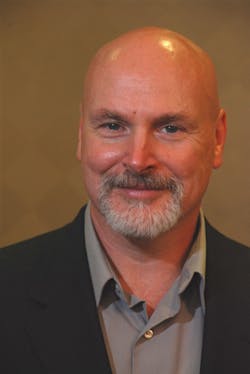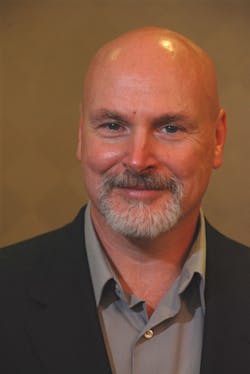Team EHR: In EHR, the "H" may very well stand for hygienist
By Mike Uretz
March 21, 2013
Powered by DentalSoftwareAdvisor.com
Editor's Note: This is the second installment in the series on electronic dental records with expert Mike Uretz, editor-in-chief of DentalSoftwareAdvisor.com. See the previous article here.
In my February column, Team EHR: A team approach to electronic dental records, I gave an overview of the importance of a team approach to the selection and implementation of electronic health records for the dental office. Now that we have discussed this approach at a 10,000 foot level, I’d like to begin the discussion of how individual key team members can impact the success or failure of EHR adoption within their practices.
We will initially explore the role of the hygienist in helping to select, adopt, and utilize EHR technology.
Each time I talk to a knowledgeable hygienist, it strikes me how much of their interaction with the patient involves the oral-systemic connection, not to mention how important workflow and communication is to them within the practice.
But in order for the hygienist to play what I consider to be an important role in the selection and implementation of EHR, we must first explore the meaning of empowerment. In my years of working with practices and helping them evaluate and select EHR and practice management systems, I have too often seen patient care team members defer to the doctors when evaluating clinical software – and often with results they ultimately regret later.
From RDH magazine: The advent of electronic dental records
Therefore, a hygienist who will ultimately use the EHR system in their daily life needs to be empowered to play an important role in the acquisition of the system.
Evaluating Features and Functionality
Assuming that, as a hygienist, you will play an integral role in the evaluation and selection of your practice’s EHR system, where do you start? How can you add value to the selection process?
Have you ever been working with the patient, having to use the practice’s dental software system, and said to yourself, “I wish this software could show me an up-to-date medication list” or, “Why does it take five clicks and three screens to enter a single procedure?” or, “Wouldn't it be great if the periodondist’s notes were available on the screen?”
Thinking back on these instances is actually a great way to get yourself in the mindset of figuring out what features you need as a hygienist. Think as if you were designing an EHR system specifically for a hygienist and how certain information could enhance your ability to do your job.
Understanding and identifying your present software’s limitations, in terms of helping you do your job, will also help when evaluating next-generation dental software.
Electronic health records: Where we've been and where we're going
After having numerous conversations with hygienists who contemplate how they can best utilize EHR features and functionality, and recognizing that dental EHR will evolve over time, I'd like to propose some basic features that a hygienist may want to request:
- Updated medication lists
- Health histories, including past diagnoses and procedures
- Ability to capture notes from referrals
- Ability to capture diagnosis codes (when available)
- Manage communication and workflow between hygienist and staff
- Recommended evidence-based treatments and procedures
- Robust patient education
Understand that this list is only the tip of the iceberg when it comes to EHR patient care features and functionality. As the software progresses and gets more sophisticated, there will be many more helpful features integrated into the software. However, the take away is that a hygienist must make sure that they have input into the evaluation of these features.
It is important to note that the hygienist needs to evaluate the software based not just on the actual features and functionality as illustrated by the above list, but also by how easy or difficult the software is to use.
Think about the time you spend with your patient and the close interaction you have with them in the chair. You obviously don't want to be more engaged with the computer, whether it's a desktop computer or a tablet.
That leads us to the question of usability and the vendor demonstrations that hygienist should be part of. As we all know, a salesperson is very happy to show you what they want to show you and spend a lot of time demonstrating things that in fact might not be of interest to you as a hygienist.
This is the time for you as a hygienist to take control of the demonstration and actually spend time developing various clinical scenarios that you will see in your daily lives. I always make sure when I'm helping conduct demos for my clients, that the salespeople use real-life scenarios to demonstrate their software and not just take a completely canned or simulated approach which puts the salesperson in control.
These demonstrations are the best time to see if the hygienist-related features are easy and intuitive or difficult and intrusive.
Conclusion:
The advent of EHR may very well be like hitting the reset button on dental practice software. This will place the empowered hygienist in a very advantageous position – very similar to providing input to the architect before your house is built. My advice to hygienists is the following:
- List the pros and cons of your current practice management system
- Educate yourself on EHR systems and how you think this may impact you and your patients
- Make a list of the features that you would want
- Volunteer to be part of an EHR task force for your practice
- When evaluating systems, don't dismiss the importance of intuitive design and ease of use
- Demand proper training – and more proper training
Ask your hygiene association to get involved with helping develop EHR policies and guidelines that will insure vendors develop solutions with the hygienist in mind
If you don't do these things, you can't complain when your practice adopts an EHR system that isn't hygienist-friendly and makes your job harder. It's like people who never vote, but always complain about the president.
When it comes to EHR, vote early and vote often to ensure you get a system you can live with for several years.

